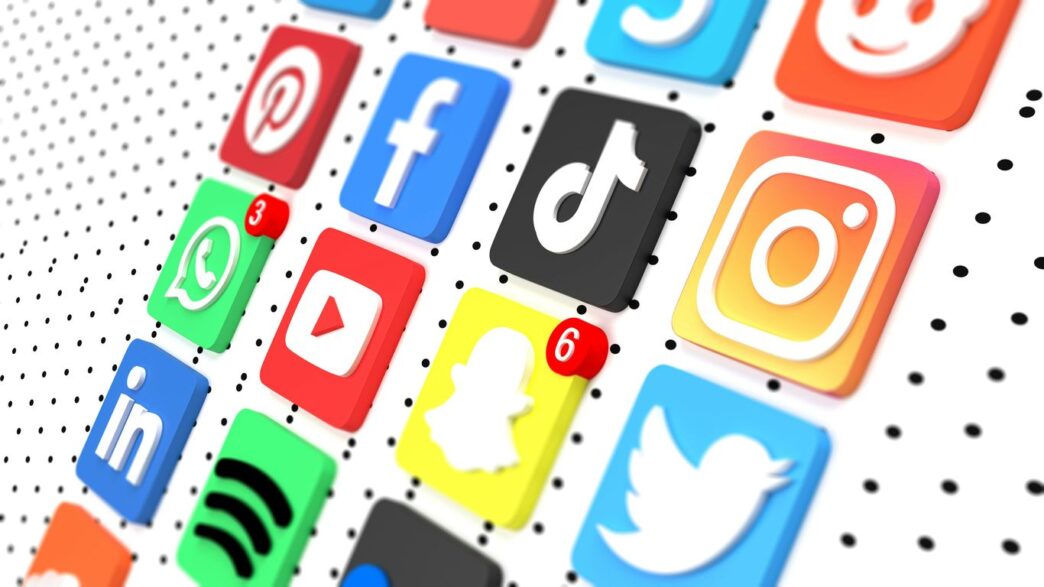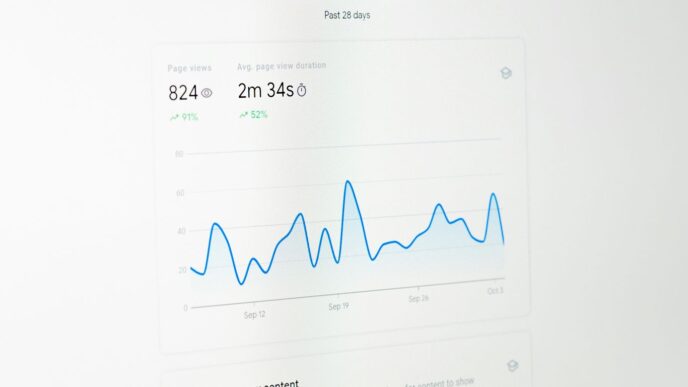It feels like every day, something new pops up online. News used to come from the TV or the paper, right? But now, it’s all over the place. Social media is a big part of that. People are getting their news from TikTok, X, and all sorts of places. In 2025, this is only getting bigger. We need to figure out how this affects what we see and believe. It’s a lot to keep up with, honestly.
Key Takeaways
- Social media is becoming a major way people get their news, and its influence is growing.
- Algorithms on social platforms now act like editors, deciding what news gets seen.
- Journalists are building their own followings online, changing how news is shared.
- People want more openness about where news comes from and how it’s made.
- Video content is becoming the main way news is presented, especially short clips.
The Evolving Role Of Social Media In News Consumption
It feels like just yesterday we were all getting our news from the morning paper or the evening broadcast. Now? It’s a whole different ballgame. Social media has really stepped up to become a major player in how we find out what’s going on in the world, and by 2025, that trend is only getting stronger.
Social Media’s Ascent As A Trusted News Source
Remember when social media was just for sharing vacation photos and what you had for lunch? Those days are long gone. People are increasingly turning to platforms like X, TikTok, and even Instagram to get their daily dose of news. It’s not just about quick updates anymore; for many, these platforms are becoming the primary way they learn about current events. This shift means that the way news is created, shared, and even believed is changing dramatically. It’s a big deal because it puts more power into the hands of individuals and less into traditional newsrooms.
Generational Differences In News Source Trust
It’s not a one-size-fits-all situation, though. Younger folks, especially, are way more likely to get their news from social media. They grew up with it, so it feels natural. Older generations might still lean on TV or newspapers, but even they are dipping their toes into online sources more and more. This creates a bit of a divide in how different age groups see the news and who they trust to tell them the story.
| Age Group | Primary News Source (Estimated 2025) |
|---|---|
| 18-29 | Social Media Platforms (e.g., TikTok, X) |
| 30-49 | Mix of Social Media and Online News Sites |
| 50+ | Traditional Outlets (TV, Print) with growing Online Use |
The Blurring Lines Between Journalism And User-Generated Content
This is where things get really interesting, and maybe a little messy. The clear line between a professional journalist reporting a story and someone just sharing what they saw on their phone is getting harder and harder to see. News can break on X in real-time, with eyewitness accounts flooding in before any news crew even arrives. This is great for speed, but it also means we have to be way more careful about what’s real and what’s not. We’re seeing more and more content that looks like news but might be coming from influencers or just regular people, not trained reporters. It’s a challenge for everyone involved to figure out what’s credible.
Navigating The Algorithm-Driven News Cycle
Algorithms As The New Gatekeepers Of Information
So, the news cycle in 2025? It’s less about what editors decide and more about what the code decides. Algorithms are basically the new bouncers at the club door, deciding who gets in and who gets ignored. If your content doesn’t grab attention in the first few seconds, it might as well be invisible. It’s a tough spot for anyone trying to get a message out, whether you’re a journalist or a brand. You really have to think about what makes people stop scrolling. It’s not just about having a good story anymore; it’s about how you package it. This means headlines need to be punchy, visuals need to pop, and you need to encourage people to interact. The platforms are built to keep users engaged, and that means prioritizing content that sparks conversation.
Crafting Content To Capture Attention In A Scroll-First World
This whole "scroll-first" mentality means we’re all speed-reading through life online. Think about your own habits – how many times do you actually stop and read a full article from a social media link? Probably not that often, right? It’s all about quick hits of information. For news creators, this means short, punchy videos, eye-catching graphics, and headlines that make you do a double-take. It’s a constant battle for eyeballs. Here’s what seems to be working:
- Short-form video: Think TikTok or Reels. Quick updates, summaries, or behind-the-scenes peeks.
- Strong visuals: Memes, infographics, or striking photos that tell a story on their own.
- Interactive elements: Polls, Q&As, or quizzes that get people involved.
- Clear, concise text: Get to the point fast. No one has time for long, rambling captions.
It’s a different ballgame than it used to be, and adapting is key if you want your message to be heard. PR success today often means collaborating with media in ways that fit these new formats.
The Impact Of AI On Newsroom Workflows And Credibility
Artificial intelligence is shaking things up behind the scenes in newsrooms. AI tools can help journalists sift through mountains of information, draft initial reports, and even suggest better headlines. This can speed things up, which is great when news is moving at lightning speed. But it also brings up some big questions. How do we make sure AI-generated content is accurate? What about bias creeping in? And who’s responsible when something goes wrong? It’s a tricky balance between using these powerful tools and maintaining the trust people have in news. We’re seeing a lot more focus on transparency and source disclosure because of these changes. It’s not just about reporting the news anymore; it’s about proving you’re doing it right.
The Rise Of Influencers And Personal Brands In News

It feels like just yesterday that news came from a few big names on TV or in the papers. Now? Things are totally different. We’re seeing a big shift where individual people, often called influencers, are becoming go-to sources for information. These aren’t just celebrities shilling products anymore; they’re folks who’ve built up a following by talking about specific topics, and increasingly, that includes current events.
Journalists Building Direct Audiences On Social Platforms
Journalists themselves are getting in on this. Instead of just writing for a newspaper or a news channel, many are setting up their own spaces online. Think about Substack newsletters, TikTok channels, or YouTube shows where they can talk directly to people. This bypasses the traditional media gatekeepers and lets journalists connect with their audience on a more personal level. It’s like they’re building their own little news communities. This means they can share stories their way, offer deeper dives, and get instant feedback. For us watching, it means we can follow reporters we trust and get news straight from the source, without as much filtering.
News Influencers Shaping Public Understanding
So, who are these news influencers? They’re people who’ve become known for their takes on politics, science, tech, or whatever else is happening. They might not have a journalism degree, but they’ve done their homework and can explain complex stuff in a way that makes sense. A lot of younger people, especially, are turning to these influencers. It’s not just about getting the headlines; it’s about understanding what it all means.
Here’s a look at who’s getting their news from social media:
| Age Group | % Getting News from Influencers | % Believes Influencers Improve Understanding |
|---|---|---|
| All Adults (US) | 21% | 65% |
| Under 30 | 37% | 71% |
It’s pretty clear that influencers are having a real impact on how people see the world. They can break down big issues, offer different viewpoints, and really get people talking.
The Shifting Dynamics Of Platform Popularity Among News Creators
Where these influencers hang out is changing too. While X (formerly Twitter) is still a big deal for quick updates and real-time news, some creators are looking for something different. Platforms like Bluesky are popping up, and influencers are moving there because they like the vibe better – maybe more control, less noise, or just a different community feel. It’s interesting to watch because it shows that creators are thinking hard about where they can best reach people and have meaningful conversations. It’s not just about having the biggest audience anymore; it’s about finding the right place to connect.
Trust, Transparency, And The Future Of Credibility
Combating Misinformation In The Digital Age
It feels like every other day there’s a new story about fake news spreading like wildfire online. It’s a real headache, right? People are getting tired of it, and honestly, who can blame them? We’re seeing a big shift where folks are really starting to question what they see and read, especially on social media. It’s not enough for a story to just be out there anymore; people want to know it’s on the level.
The Growing Demand For Transparency And Source Disclosure
Because of all this, there’s a huge push for news outlets and even brands to be more open about where their information comes from. Think about it: when you see a news report, knowing who funded it or what their sources are makes a big difference in whether you believe it. This is why we’re seeing more fact-checking, clear labels on sponsored content, and journalists being upfront about their research methods. It’s all about building that trust back up.
Ethical Storytelling In A Hybrid Media Ecosystem
So, what does this mean for brands and anyone trying to get a message out there? It means you’ve got to be on your game. You can’t just throw content out and hope for the best. You need to tell stories in a way that’s honest and clear. This might mean:
- Being upfront about partnerships: If you’re working with someone, make sure it’s obvious.
- Showing your work: When you make a claim, be ready to back it up with solid evidence.
- Considering your audience: Think about how your message might be interpreted and if it could accidentally cause confusion or spread bad info.
Basically, in this mixed-up world of news and social media, being straight with people is the only way to get them to listen and believe you in the long run. It’s not just about getting attention; it’s about earning respect.
Video’s Dominance In News Delivery
Forget those dusty old press releases. In 2025, if you want to get your news out there, especially on social media, you’d better have a video ready. It’s not just a trend anymore; it’s pretty much the standard way things are done.
Video Replacing Traditional Press Releases
Seriously, most journalists and editors I’ve talked to would rather watch a quick 60-second video summary than sift through a lengthy written announcement. It’s faster, more engaging, and you can actually see and hear what’s going on. Think about it: a short clip explaining a new product, a quick update from a company leader, or even a visual tour of a new facility. It cuts through the noise way better than a block of text. Brands that aren’t making video a priority are going to get left behind, plain and simple.
The Appeal Of Short-Form Video Updates
And it’s not just any video. The super short stuff, like TikToks or Reels, is where it’s at for quick news bites. People are scrolling through their feeds at lightning speed, and you’ve got maybe a few seconds to grab their attention. A punchy, visually interesting short video can do that. It’s perfect for breaking news, quick explainers, or even just highlighting a key statistic. It’s all about getting the main point across fast and making it easy to digest while you’re on the go.
Investing In Video-First Communication Strategies
So, what does this mean for businesses and news outlets? You’ve got to start thinking "video-first." This means planning your communication strategy with video at the center. It’s not just about making a video to go along with your text; it’s about creating the video and then maybe adapting it for other platforms. This might mean investing in better cameras, editing software, or even training staff on how to shoot and produce decent video content. It’s a shift, for sure, but one that’s pretty necessary if you want your message to be heard in 2025.
Platform Dynamics And Audience Reach

Okay, so let’s talk about where people are actually getting their news in 2025. It’s not just one place anymore, is it? Things are spread out, and different platforms are good for different things.
X’s Continued Role In Real-Time News Distribution
X, you know, the platform formerly known as Twitter, is still a big deal for breaking news. It’s like the town square for immediate updates. If something happens, it’s probably going to pop up on X first. This speed is why it remains a go-to for both journalists and the public when events are unfolding. It’s got this network effect that’s hard to beat for getting information out fast. Even with all the changes, its reach for real-time stuff is pretty unmatched.
Emerging Platforms For News Influencers
While X is great for speed, we’re seeing a shift. Some influencers and news creators are looking for more control and a different kind of interaction. Platforms like Bluesky are starting to get noticed because they offer a cleaner space, maybe less noise. It’s not about replacing X entirely, but about finding places where conversations feel more focused and maybe a bit more civil. Think of it as finding niche communities for news discussion.
Reaching Broad Audiences Across The Political Spectrum
Getting your news to everyone, no matter their political leanings, is a challenge. Traditional TV news still holds its own, especially local news, and cable news is making a comeback for breaking stories. But on social media, it’s a different game. You’ve got influencers who are now regularly followed by a significant chunk of people, especially younger adults.
Here’s a quick look at how influencers are becoming news sources:
- 21% of U.S. adults now say they regularly get news from social media influencers.
- This number jumps to 37% for adults under 30.
- A majority of these news consumers (65%) feel that influencers help them understand current events better.
- And 71% believe the news they get from influencers is different from what traditional outlets provide.
So, it’s not just about where the news is published, but who is telling the story and how they connect with their audience. Brands and news outlets need to think about these different channels and voices to actually reach people today.
So, What’s the Takeaway?
It’s pretty clear that how we get our news is changing, and fast. Social media isn’t just a place for cat videos anymore; it’s a major player in how stories get out there. While old-school news outlets still have their place, especially local TV, we’re seeing more and more people, especially younger folks, turning to platforms like TikTok and YouTube. Journalists are even building their own followings directly. This means we all, whether we’re just trying to stay informed or trying to get a message out, need to pay attention. Algorithms are basically the new editors, and video is becoming king. Plus, with all the noise, people are really looking for honesty and clear sources. So, yeah, it’s a bit of a mess, but understanding these shifts is key to making sense of the news in 2025 and beyond.
Frequently Asked Questions
How is social media changing the way people get their news?
Social media is making news spread super fast. It’s also changing what stories get told because what’s popular online often gets more attention. Plus, many journalists are now sharing their work directly with people on these platforms, not just through big news companies.
Are traditional news releases still important for brands?
They still matter, but they need more than just words. To get noticed, news releases now need cool pictures, videos, and ways for people to talk about them online. Just sending out a text-only release might not be enough anymore.
Which social media sites will be the most popular for news in 2025?
Sites like TikTok, LinkedIn, and YouTube are becoming really important for finding news, especially for younger people. While X (formerly Twitter) is still good for breaking news, these other platforms are growing fast for sharing and discovering stories.
How can businesses work better with news reporters online?
Brands should try to build real connections with journalists. It’s important to offer them interesting and true information and be ready to share stories in ways that work well for social media and online videos. Being helpful and reliable goes a long way.
What’s the deal with influencers sharing news?
More and more people, especially younger ones, are getting their news from social media influencers. These influencers can help explain current events in ways that make sense to their followers, and sometimes their take on the news is different from what you’d find in traditional news outlets.
Why is it important for brands to understand these changes in news?
Because the way people get news is changing so much, brands need to keep up. If you want your message to be heard and trusted, you have to know where people are looking for information and how they want to receive it. It’s all about sharing your story in a way that connects with people today.














